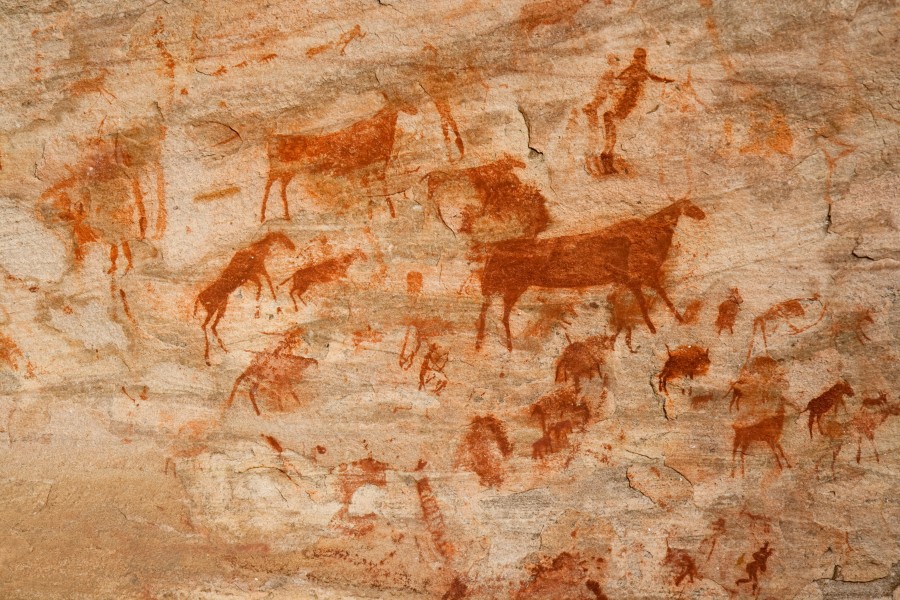From Cave Walls to Digital Screens: A Visual Journey through the Evolution of Graphic Design

Graphic design can be traced back to prehistoric times. It has evolved over centuries, influenced by changes in technology, artistic styles, and cultural values, to become the dynamic field it is today. Today, graphic design is used in virtually all aspects of our lives, from advertising to product packaging to web design. It is an essential tool for businesses to create visual content that communicates their message powerfully and effectively.
Let’s take a closer look at the evolution of graphic design over time and see how it has shaped the way we communicate visually.
Prehistoric Art (up to 5000 BCE)
The earliest forms of graphic design were born out of a need to communicate visually. Prehistoric artists created cave paintings and rock art to record and share information with their communities. These primitive images served as storytelling tools, documenting everyday life, and preserving cultural traditions.

Classical Antiquity (5000 BCE – 476 CE)
In ancient Greece and Rome, graphic design was primarily used for ornamental and functional purposes. Artists created intricate mosaics, sculptures, and pottery adorned with stylized designs and patterns. The use of graphic design in this era was often associated with luxury and opulence, serving to enhance the visual appeal of everyday objects.

Middle Ages (476 CE – 1450 CE)
During the Middle Ages, graphic design took on a new form with the advent of illuminated manuscripts. Monks used intricate designs and calligraphy to illustrate religious texts, creating visually stunning works of art that were both functional and ornamental. The use of gold leaf, colourful inks, and detailed illustrations helped bring these manuscripts to life, providing a means of visual communication for an otherwise largely illiterate population.

Renaissance (1450 CE – 1600 CE)
The Renaissance saw the emergence of printing technology, which transformed the way information was shared and disseminated. The invention of the printing press allowed for mass-produced printed materials, including books, pamphlets, and newspapers. Graphic designers began to experiment with typography, page layout, and visual storytelling to make these materials more engaging and accessible.

Industrial Revolution (1760 CE – 1840 CE)
The Industrial Revolution brought about significant changes in manufacturing and communication, leading to the emergence of mass-produced printed materials. Graphic designers began to incorporate bold typography, bright colours, and eye-catching illustrations to attract attention. The use of posters, billboards, and advertisements became widespread, leading to a boom in the field of advertising and branding.

Modernism (1900 CE – 1960 CE)
In the early 20th century, graphic designers started to embrace minimalism and simplicity, rejecting the ornate styles of the past. The Bauhaus movement, founded in Germany in 1919, advocated for the integration of art and technology to create functional, streamlined designs. Graphic designers began to focus on the essential elements of design, including typography, colour, and composition, to create powerful visual messages.

Postmodernism (1960 CE – 2000 CE)
Postmodernism challenged the idea of a unified design style and instead celebrated diversity and individuality. Designers began to experiment with typography, colour, and imagery in unconventional ways, often incorporating elements of pop culture and consumerism. The rise of digital technology provided designers with new tools and techniques to create more complex and interactive designs.

Digital Age (2000 CE – present)
The advent of digital technology in the late 20th century has transformed the field of graphic design. With the rise of desktop publishing software, designers can now create and manipulate images and text with ease. The Internet and social media have also opened up new avenues for communication and visual expression. Today’s graphic designers are creating everything from websites and mobile apps to social media campaigns and digital ads.

The evolution of graphic design over time has been marked by constant innovation and creativity. From prehistoric cave paintings to digital designs, graphic design has always been a means of communication, storytelling, and artistic expression. With new technologies and emerging trends, graphic design continues to be an important universal tool that helps businesses stand out and communicate their messages to the world.





